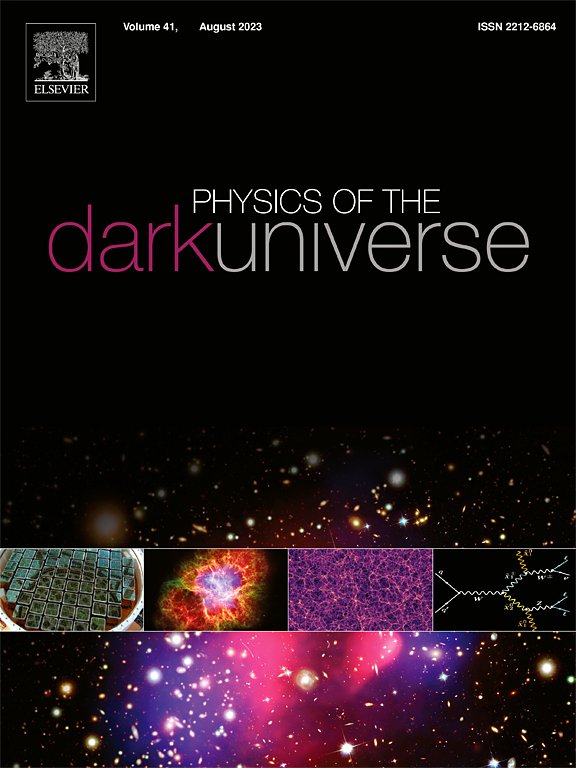Tracing cosmic evolution through Weyl-Type f(Q,T) gravity model: Theoretical analysis and observational validation
IF 5
2区 物理与天体物理
Q1 ASTRONOMY & ASTROPHYSICS
引用次数: 0
Abstract
We investigate the cosmic evolution of the Universe across different cosmological epochs in exponential Weyl-type gravity model. The theoretical analysis involves a detailed dynamical system approach, where we define dimensionless variables and derive a system of linear differential equations to identify critical points corresponding to the radiation, matter and de Sitter phase. The findings show the transition from deceleration to acceleration phase, with stable and unstable critical points characterizing different phases of the evolution. In the second phase, we validate the theoretical predictions by using observational data from Cosmic Chronometers () and Pantheon datasets. We constrain the Hubble parameter and subsequently analyzed the other cosmological and geometrical parameters. In this approach also, the transition from deceleration to acceleration has been confirmed, with the equation of state (EoS) parameter approaching CDM at late times. The model behavior in both the approaches show the late-time behavior of the Universe. The evolutionary behavior of both the Hubble parameter and distance modulus, reinforcing the reliability of the Weyl-type gravity model in describing the expansion history of Universe.
求助全文
约1分钟内获得全文
求助全文
来源期刊

Physics of the Dark Universe
ASTRONOMY & ASTROPHYSICS-
CiteScore
9.60
自引率
7.30%
发文量
118
审稿时长
61 days
期刊介绍:
Physics of the Dark Universe is an innovative online-only journal that offers rapid publication of peer-reviewed, original research articles considered of high scientific impact.
The journal is focused on the understanding of Dark Matter, Dark Energy, Early Universe, gravitational waves and neutrinos, covering all theoretical, experimental and phenomenological aspects.
 求助内容:
求助内容: 应助结果提醒方式:
应助结果提醒方式:


